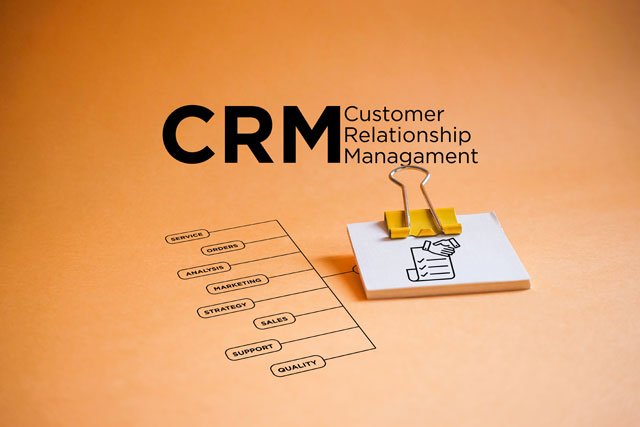INTRODUCTION
In general business and management coaching – also called corporate coaching or leadership coaching - refers to a consultant working with a person to achieve a professional goal. This is a type of human resource development that provides positive support. Areas of coaching can include:
1. improved strategic thinking
2. improved communication
3. performance management
4. organizational effectiveness
5. dealing with conflict
6. effective team building
Business coaches can call themselves consultants and take on a broad business relationship.
OVERVIEW AND HOW TO
Here is an overview on a way to proceed with business coaching work.
1. Establish the coaching agreement while meeting ethical and profession standards
2. Create a working relationship with trust and a presence
3. Communicate effectively with active listening and questioning
4. Facilitate learning with planning and goal setting
5. Manage progress and accountability
Let's look more closely now at these.
You begin the coaching experience with a framework for the work to be done. An ethical code can help with the understanding that the coach will refer the client to other professionals as needed. As you establish a coaching agreement you cover fees, scheduling, scope, and logistics.
As you work together you create a relationship or trust with a safe environment of respect. The coach shows genuine feelings for the future of the client. Integrity and honesty are important parts of the relationship. This can involve risk taking.
Effective communication should involve these guidelines for the coach.
-
Use active listening while the coach attends to the client's agenda
-
Repeat back what the client says
-
Encourage honest communication on the part of the client
-
Do not be judgmental
-
Ask questions to show active listening
-
Ask open ended questions – not those that lead to a one word answer
-
Ask questions to move the client forward not look back or justify
-
Be clear and direct in feedback
-
Be clear on stating goals and objectives
When facilitating learning and results here are some guidelines for the coach.
-
Help the client to achieve agreed on results
-
Identify underlying concerns
-
Identify strengths and areas for learning and growth
-
Look at the difference between significant and non-significant issues
-
Create opportunities for learning
-
Brainstorm to define actions
-
Focus on concerns
-
Promote experimentation
-
Celebrate successes
-
Encourage growth plus a comfortable pace of learning
When planning and goal setting here are some guidelines for a coach to follow.
-
Develop and maintain a coaching plan
-
Create a plan that is SMART – specific, measureable, attainable, realistic, timely
-
Use target dates
-
Make plan adjustment
-
Look at sources for learning such as books and other professionals
-
Identify early successes
When managing progress and accountability here are some guidelines a business coach can follow.
-
Make the client responsible for taking action
-
Ask the client for actions that will move them toward stated goals
-
Ask the client to show follow through on goals
Interested in learning more? Why not take an online Management Consultant course?
-
Acknowledge what the client has learned, done, and not done since coaching began
-
Keep the client on track between sessions
-
Focus on the plan but adjust as needed
-
Hold the client accountable for what they say they will do
WHERE BUSINESS COACHING CAN HELP
Here are some examples of successful business coaching. These are examples of success stories from the World Wide Association of Business Coaches (WABC).
Help with a fast growing business
A construction company in Mexico had success working with a business coach. The business involves supplying the construction industry with cement and concrete. The company become well regarded nationally and internationally, growing faster than any other company in its field. Leadership and shareholders wanted to invest in plants with world class technology.
An executive coaching team helped the organization achieve its goals. Staff at the company was stretched too thin to take on additional work. The coaching team worked with the organization to train and advise on a plan to address these issues. Fast commercial growth of the company meant that the current staff could not keep up with the demands of growth. This led to problems with management of existing teams. The coaching team interview members of the company and developed this plan.
1. Hold workshops on the plan for change to create an environment of communication, openness, and trust. Analyze the feedback based on surveys after the workshop.
2. Hold coaching sessions throughout several months to establish goals. Analyze feedback based on surveys after the workshop.
3. Implement the program. For one year provide coaching services to monitor implementation.
4. Continue coaching on a monthly basis to allow for feedback and create effective teams, leadership, and process with continuous improvement
After coaching was performed feedback showed that before coaching started a hostile environment existed in various department. The environment also included blame for problems. This was true in areas such as finance and throughout the organization. People did not have an open attitude toward improving. Motivation was not there for the effort involved in change. With coaching came these improvements.
1. Individuals began to interact with less hostility.
2. The working atmosphere improved. This happened at all levels.
3. Willingness to improve is greater. People want more to achieve and perform better.
4. The culture now is more open to team work, innovation, and improved customer service.
Helping a non profit
A non profit in the United States contracted for business coaching and sustained rapid growth paving the way for future success.
A volunteer health agency with the goal of improving the health of babies and preventing birth defects funds programs through research, education, and community services. The division contracting for services is a multi million dollar organization. The director has ten direct reports at various remote locations. The organization had a leader who saw the group grow from one of a very low rank to a top performing organization. A walk the group sponsors ranks as one of the top fund raisers going and more than doubling the amount of money brought in, with it reaching the $1 million mark.
This director has a history of great success including success at this non profit. He wants his direct reports to get coaching so feels he should set an example. The goal he has is go from being a leader and manager to being an executive leader. He is looking for double digit growth each year. His business coach took this approach.
1. Begin by examining the strengths of each director including perceptions and styles.
2. Work on developing a talent management process with a focus on hiring, developing, and retaining leaders.
3. Develop a culture with a focus on professional development.
4. Work on interpersonal communication.
In evaluating the coaching the director noted that the experience was a positive on helping him adapt to situations. He created open communication with his direct reports who respected the director and wanted to help. After 10 months of coaching, the director set goals for future success.
- Improve recruitment for volunteers
- Put volunteers on a training path
- Help volunteers go on a career path
- Recognize the importance of volunteers
- Grow revenues from the organizations walk
- Reduce expenses
- Continuing to reduce expenses.
- Increase public support
- Removal of team member turnover
Help moving from state ownership to successful private ownership
An organization with challenges contracted for business coaching and found success. The organization originally was run by the Canadian government. The business was wine bottling. The concern was a conflict of interest so the operation went from government run to private ownership.
The government run operation had low client focus so there were challenges in becoming privately run. The challenge cam from a competitor. Market share for the new company was decreasing.
A business coach knew the history of the organization and helped senior management with the skills needed for success. This included helping a chemist move into the position of CEO and President. He faced these challenges.
1. The new organization was losing market share
2. The new organization had no history of being competitive
3. The new organization needed new goals
4. The new organization needed to segment different markets
5. The new organization needed to realign resources and increase accountability for results
To address these issues here was the approach.
1. Use a new team process to uncover and solve problems
2. Assess the skills of top management using questionnaires and interviews
3. Improve management skills in the areas of communication and cooperation
4. Replace executives as needed
5. Hire new executive with market sector experience
6. Plan and implement a new marketing and sales strategy
Here are the results after coaching.
1. Market share increased for the company
2. A strong internal team was developed
3. The CEO states he feels he is now still people oriented but also more results oriented, considering himself a better leader and able to achieve goals
MORE IDEAS ON BUSINESS COACHING
Here are some ideas a business coach can use. These ideas have to do with:
-
Starting work with a client
-
Making business effective
-
Working on mission and vision
-
Reviewing strengths and areas for improvement
-
Setting goals
-
Solving problems and making decisions
-
Being personally effective
Let's look more closely now at these.
During the initial work with a client here are some guidelines.
1. Get the client open to change and agree on what coaching will involve
2. Use a questionnaire that covers business oriented questions and personal oriented question
3. Use a goals sheet that coves both what goals the client wants to achieve but also what goals the coaching will have
4. Review the business history to get a background on the client's business
5. Use a review form to give the client a change to give you feedback throughout the coaching experience getting these forms regularly
To make the business more effective here are some guidelines a coach can use.
1. Develop a mission and vision
2. Review the current state of the business
3. Use SWOT (strengths, weaknesses, opportunities, threats) analysis
4. Get goals to align with the mission and vision
In helping the client be more effective here are some guidelines on what the coach can do.
1. Explain about time management
2. Explain about priority management
3. Explain about delegation
4. Review how the client spent their time and plan how to address areas for improvement
5. Complete a personal SWOT analysis
When you do the personal SWOT analysis you should look at the client's strengths and weaknesses. This is in addition to the strengths and weaknesses of the organization. Have the client analyze and plan where they could make improvements personally and how that could positively impact the business.
You could list your client's three greatest strengths. Then ask how the client could improve on them to make them even stronger. In the same way you could ask your client to list their three greatest weaknesses. Then work together to develop a plan to reduce the impact of these weaknesses.
Help the client set up daily habits to be more effective by better managing time and priorities.
AN EXAMPLE OF SWOT ANALYSIS
Concerning the SWOT analysis, here is an example.
|
Strengths |
Weaknesses |
Opportunities |
Threats |
|
Good track record of achievement |
Shortage of people in leadership roles to sustain achievement |
Look to hire more people in leadership role |
New hires may require salaries the business cannot afford |
|
Able to learn new technologies personally |
Processes and products are not using new technologies |
Look to introduce new technologies into processes and products |
Cost of introducing new technologies may be prohibitive |
|
Able to grow market share |
Not enough staff to ramp up production |
Look at hiring more staff |
Cost of hiring new staff could be prohibitive at least in the short term |
SUMMARY AND CONCLUSION
We have now looked at some issues concerning business and management coaching.
We looked at an overview with how to information, examples of where business coaching can help, and tools and ideas about good business coaching techniques.

































